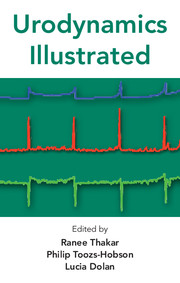Book contents
- Frontmatter
- Contents
- About the authors
- Acknowledgements
- Glossary and abbreviations
- Preface
- 1 Introduction
- 2 Setting up the equipment
- 3 Flow rate testing
- 4 Cystometry
- 5 Videocystourethrography
- 6 Ambulatory urodynamic monitoring
- 7 Urodynamic artefacts
- 8 Assessment of urethral function
- 9 Bladder diaries
- 10 Pad testing
- 11 Pre-test assessment using questionnaires
- 12 Ultrasound as a tool in urodynamics
- Index
10 - Pad testing
Published online by Cambridge University Press: 05 February 2014
- Frontmatter
- Contents
- About the authors
- Acknowledgements
- Glossary and abbreviations
- Preface
- 1 Introduction
- 2 Setting up the equipment
- 3 Flow rate testing
- 4 Cystometry
- 5 Videocystourethrography
- 6 Ambulatory urodynamic monitoring
- 7 Urodynamic artefacts
- 8 Assessment of urethral function
- 9 Bladder diaries
- 10 Pad testing
- 11 Pre-test assessment using questionnaires
- 12 Ultrasound as a tool in urodynamics
- Index
Summary
Introduction
Pad testing is most often used in the objective assessment of women with urinary incontinence. It involves the use of pre-weighed continence pads to capture urinary leakage over a period of time. The pads are then weighed to calculate the amount of leakage on completion of the test.
Why are pad tests performed?
Pad tests are most commonly used in the research setting:
□ to provide objective confirmation of urinary incontinence before and after treatment
□ to measure objectively the quantity of urine loss as a measure of severity: a 24-hour pad test loss of greater than 75 g represents severe incontinence in women with stress urinary incontinence1
□ as a general aid when determining type of incontinence: women with pure stress urinary incontinence have been shown to leak less than 100 g in 24 hours and those with overactive bladder have more severe leakage;1 however, there is significant overlap, such that pad tests cannot be used to make an accurate diagnosis
□ to help to differentiate between urine and vaginal discharge in women who may have excessive vaginal fluid loss: urinary incontinence is unlikely if less than 2 g of loss is found on a 24-hour pad test; such tests should not be conducted with panty liners, as they have a tendency to evaporate their fluid.
Types of pad test
There are several methods of pad testing which differ in duration of test, ranging between 1 hour and 72 hours, and in the activities undertaken during the test.
Keywords
- Type
- Chapter
- Information
- Urodynamics Illustrated , pp. 117 - 122Publisher: Cambridge University PressPrint publication year: 2011



